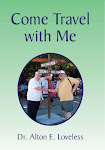
Attracted to my eyes was the tall Monument at Yorktown, celebrating victory in the American Revolutionary War. I later learned it had been installed in 1884.
Yorktown is situated along the York River in southeastern Virginia. Yorktown has several distinct areas. Yorktown Village or Historic Yorktown is set on the York River, near the George P. Coleman Memorial Bridge that spans said river to reach Gloucester Point. The area of Yorktown is one of the eight original shires formed in colonial Virginia in 1634. Yorktown, named for the ancient city of York in Yorkshire, Northern England, was founded in 1691 as a port for shipping tobacco to Europe. The lawyer Thomas Ballard was the principal founder of the city along with Joseph Ring. It was called "York" until after the American Revolutionary War, when the name "Yorktown" came into common use.
While I expected many old buildings due to its history, there were few. Historic Yorktown is comprised first of a small strip along the beach of the York River, Water Street, which contains several small restaurants, a park, a hotel, a pier, that has small shops and restaurants. These Shops and eateries make up the "Riverwalk" section on the waterfront and were opened May 2005. It was a delightful place to sit and view the area. One of the restaurants inside was a very good place where we ate.
From this vantage point we saw a cutter that had ported. A sign welcome us to board the ship and look through it at no cost. We discovered after boarding it was from Brazil and had sailed there after many days at sea.
Main Street sits above Water Street on a bluff, around which the architecture is almost exclusively original. The old court house, several small shops, the Nelson House, and the Yorktown Monument all sit along this road. Around the center of the town are residential streets. Also, architecturally of note is Grace Episcopal Church, situated on Church Street near the old courthouse of Yorktown. Colonial National Historical Park, which contains Yorktown National Battlefield and Yorktown National Cemetery, is located on the outskirts of the town. President's Park is a new attraction displaying large outdoor statues of the heads of each American President accompanied by biographical plaques.
However, the town is most famous as the site of the siege and subsequent surrender of General Cornwallis to General George Washington during the American Revolutionary War on October 19, 1781. Although it would last for another year, this British defeat at Yorktown effectively ended the war. It was the base of British General Charles Cornwallis during the 1781 siege, which was the last major battle of the American Revolutionary War. The Americans had tricked the British, led by Cornwallis, into thinking they were in New York; however, Washington's army mounted a surprise attack in Yorktown and cut off their escape path on the York River.
Yorktown also figured prominently in the American Civil War (1861–1865), serving as a major port to supply both northern and southern towns, depending upon who held Yorktown at the time. During the 1862 Peninsula Campaign, the town was captured from the Confederacy following the Siege and Battle of Yorktown and was then used as a base by the Union Army of the Potomac under General George B. McClellan.
Very little of the recent growth of York County has occurred close to Yorktown, which at this point is becoming much more of a historical colonial village, much like Williamsburg, under the guidance of the National Park Service.
In his Notes on the State of Virginia published in 1781–82, Thomas Jefferson noted that the York River at Yorktown "affords the best harbour in the state for vessels of the largest size. The river there narrows to the width of a mile, and is contained within very high banks, close under which the vessels may ride." During World War I, the western shore above Yorktown became a location of choice for the U.S. Navy, as about 13,000 acres, which straddled York, Warwick County and James City County were appropriated to create what was originally termed a "naval mine depot". The Navy continues to use it 90 years later.
After spending much of the day in Yorktown, we decided to drive to the place where the final battle between Washington and Cornwallis was held and where Cornwallis surrendered. To be honest to you I did not think the National Park Service has made a sufficient monument first such an event. There is nothing there but just a sign. Since this was the beginning of the birth of our nation and the ending of the Revolutionary War I expected more.
Come on, let us deal wisely with them; lest they multiply, and it come to pass, that, when there falleth out any war, they join also unto our enemies, and fight against us, and so get them up out of the land. Exodus 1:10 (KJV)







